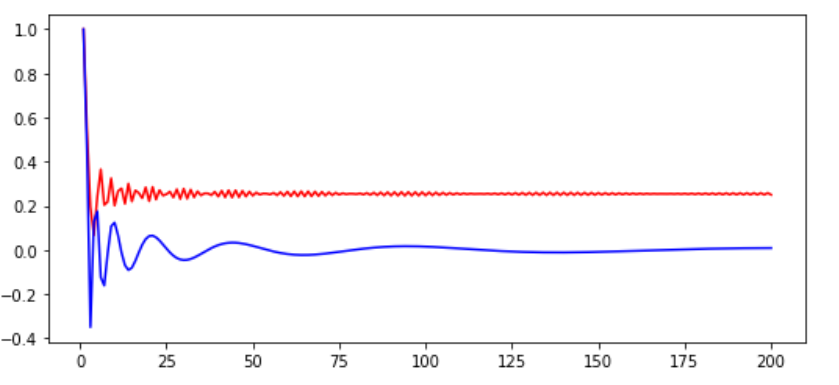Let $0<\alpha <1$ and $\beta > 0$. Consider the mapping $$F(\alpha, \beta) = \sum_{n=1}^{\infty}{\dfrac{(-1)^{n-1}\biggl( \cos \left(\beta\ln(n)\right)\biggr)}{n^{\alpha}}}.$$ Can we prove $F(\alpha, \beta)$ exist (in other words the series converges), and how should one approach studying the roots of $F(\alpha, \beta)$ that is $$F(\alpha, \beta) = 0.$$ Numerical results suggest the partial sums $$F_k(\alpha,\beta) : = \sum_{n=1}^{k}{ (-1)^{n-1}\dfrac{\cos(\beta \ln(n))}{n^\alpha}}$$ of this series satisfies $$F_k(\alpha,\beta)\le F(\alpha, \beta)\le F_{k+1}(\alpha,\beta)$$ I want to then look for a $C^k$ (infinitely differential in $k$) function $g(k,\alpha,\beta)$ such that $$\dfrac{\partial }{\partial k} g(k,\alpha, \beta) = 0 $$ and $$g(k,\alpha, \beta) = F_k(\alpha, \beta)$$ for each $k\in \mathbb{N}$ (but not necessarily all real numbers) so that at each point of $k$ the partial sum the derivative is zero and we get a maximum or minimum (wave like structure) of $g$. Can we find such a function $g$? If so, I claim $g$ will converge to $F(\alpha,\beta)$ for large $k$. That is $$\lim_{k\rightarrow \infty}{g(k,\alpha,\beta)} = F(\alpha,\beta)$$ but can we prove it? There should be many functions we can find. Here is an image for $\alpha = 0.90 $ and $\beta = 8.264$  If we compare to the function $$g(k,\alpha,\beta) := \cos(\beta \ln(k))/k^{\alpha}$$ (see blue graph)
If we compare to the function $$g(k,\alpha,\beta) := \cos(\beta \ln(k))/k^{\alpha}$$ (see blue graph)  we find similar behavior in regard to its convergence point and its periodicity it seems the action of taking this series on a periodic function does not really change it much. Hence, suggesting the series is not really affecting the periodicity of the function instead it is just changing the amplitude and frequency (its convergence points). So it seems this is modeling the frequency of some wave.
we find similar behavior in regard to its convergence point and its periodicity it seems the action of taking this series on a periodic function does not really change it much. Hence, suggesting the series is not really affecting the periodicity of the function instead it is just changing the amplitude and frequency (its convergence points). So it seems this is modeling the frequency of some wave.
Convergence and roots of alternating periodic infinite series
MrPie
- 305
- 1
- 7

